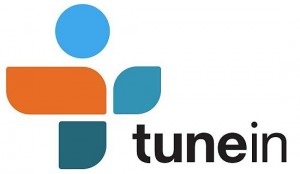New Study Shows Uninsured Numbers Vary Widely Across States: Arkansas Ranks Fifth
Former CBO Director June O’Neill’s New Report Reveals Uninsured “Crisis” Ill-Defined
WASHINGTON, DC – The Employment Policies Institute’s (EPI) new study shows that the widely employed estimate of 47 million uninsured Americans is a misleading representation of the problem. The study, authored by Drs. June and David O’Neill of Baruch College and City University of New York, shows that more than 43 percent, or 18 million, of uninsured Americans ages 18-64 could likely afford health coverage and are actually “voluntarily uninsured.” June O’Neill served as Director of the Congressional Budget Office (CBO) from 1995-1999.
The uninsured population varies dramatically from state to state. Arkansas ranks fifth in the nation, with 26 percent of residents currently without insurance. In comparison, 28 percent of Louisiana and 18 percent of New York residents are uninsured. The states with the highest and lowest percentages of uninsured residents are Texas (30%) and Minnesota (11%). The national average is 20 percent uninsured. Arkansas’ uninsured population is made up of 17 percent “involuntarily” and 8 percent “voluntarily” uninsured. Three states (Texas, Florida and California) make up a third of the nation’s uninsured population. These results suggest that federal policies for extending public coverage for the uninsured should take into account interstate differences.
Current policy proposals dramatically overestimate the cost of providing affordable health insurance for those Americans who currently cannot afford coverage due to a lack of understanding of who the involuntarily uninsured population is, why they lack coverage, and the amount of health care resources that they currently access. With greater understanding and recognition of the diversity within the uninsured population, the goal of providing affordable health insurance to all Americans should be possible with solutions that cost far less than the CBO’s estimated figure of $1.6 trillion for implementing recent congressional proposals that would only address two-thirds of the problem.
“Instead of focusing on a one-size fits all approach to health care coverage, we should look at what individual states are currently offering and provide additional federal support as needed,” said study author Dr. O’Neill. “We urge policymakers not to rush the healthcare debate. This study shows that we need to better understand American’s uninsured population and the factors affecting both coverage and access to care.”
Using data from a number of surveys to determine what percentage of uninsured Americans are actually unable to afford it, the study finds that at least 43 percent of Americans in the 18-64 year-old age group have incomes at least 2.5 times the poverty level and are “voluntarily” uninsured. The study finds that 79 percent of people with incomes between 2.5 and 3.75 times the poverty level currently purchase private health insurance. In view of the large percentages covered at this level, the authors consider this uninsured group as having enough disposable income to purchase health insurance.
Media Availability: Study Author Dr. June O’Neill, Baruch College and City University of New York is available for media interviews. Please contact Samantha O’Neil, Employment Policies Institute, (202) 463-7650 or oneil@epionline.org for scheduling information.
Study: O’Neill, Drs. June and Dave; “Who Are the Uninsured? An Analysis of America’s Uninsured Population, Their Characteristics and Their Health” http://epionline.org/studies/oneill_06-2009.pdf






